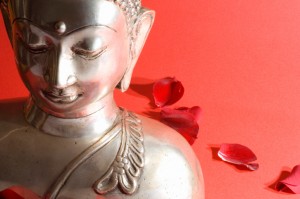 Recent reports on NPR and other media outlets have suggested that Buddhism is on the wane in Japan. It’s estimated that about 40 percent of the 77,000 temples in Japan will close their doors and cease to function over the next 25 years. For the record, that’s over 30,000 temples. If 30,000 churches in the United States closed their doors, it would almost be a national crisis. What’s happening in Japan that is causing this phenomenon?
Recent reports on NPR and other media outlets have suggested that Buddhism is on the wane in Japan. It’s estimated that about 40 percent of the 77,000 temples in Japan will close their doors and cease to function over the next 25 years. For the record, that’s over 30,000 temples. If 30,000 churches in the United States closed their doors, it would almost be a national crisis. What’s happening in Japan that is causing this phenomenon?
How Buddhism Came to Japan
In order to understand the future, one must often look back at the history. Buddhism is thought to have been brought into Japan through Korea, but the religion itself began in India. This almost seems like the long route, and it is. Buddhism moved from India into China via the Silk Road, the trade and cultural routes that were vital in the development of many civilizations. For China, the Silk Road was mostly about economic benefits, but philosophy, technology, and religion were also exchanged as citizens came into contact with other cultures. Interestingly, Buddhism was on the decline in India as it began to take off in China, around the late second or first centuries B.C.E. From China, Buddhism moved into Korea, then into Japan.
In Japan, Buddhism has come to be associated with death. The belief is that when someone dies, the spirit becomes a family ancestor, provided it is well-cared for. Many families keep the Buddhist principles at death to turn their loved one into the family ancestor. The funeral is a long process, and it is very expensive. Today’s families need less costly funeral options, which is another way the Buddhist temples are losing their profits.
Closing of the Temples
Currently, many of the Japanese temples are without a priest. Typically, the temple passed from father to son. Over the past 150 years, sons have been declining their inheritance. This lack of priests is one problem that they are attempting to address. However, the second problem is that there is a lack of patrons. Young people are leaving the small communities for opportunities in larger, urban areas. This leaves each temple without local support. It’s in the rural communities where the temples are waning.
The Buddhist monks are doing what they can to change perception. The priests are finding ways to talk to people about Buddhist traditions and draw them into the temple. Younger priests are even looking for social welfare activities to bring their attention into the community. However, many experts believe that the tradition is still dying, and with the communities themselves dying and losing population, it’s going to be difficult to get enough patrons to continue support of the temples.
Buddhism in Decline Worldwide
According to a Pew Research Center study, Buddhism is the only world religion that is not poised for growth over the next 50 years. The numbers are expected to remain stable, but as a percentage of the world’s population it will decline. This is in part because of its lower fertility rate and aging populations in China, Japan, and Thailand. Muslims and Christians are the two fastest growing religious populations, which could also influence Japanese culture.
Small towns across the United States are also experiencing this same thing. The younger population is leaving for larger cities and more opportunities. Members of churches, temples, and synagogues are aging and unable to support their leaders. What’s happening in Japan with the Buddhist temples could easily be happening in America. It’s a situation which should be watched to see what techniques work to draw people back into fellowship. What’s sad for Japan is that it’s going to lose the peaceful places of worship and beautiful gardens of Zen that reflect centuries of tradition.

